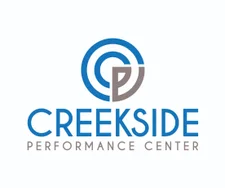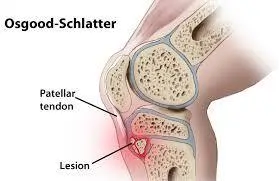What is Osgood-Schlatter Disease?
Osgood-Schlatter Disease (OSD) is an overuse injury causing increased bone growth on the tibial tuberosity, which is the small bump just below the knee cap.
What are the painful bumps beneath my kneecaps?
If you are a young athlete 10-15 years old, it is most likely Osgood-Schlatter Disease.
How does Osgood-Schlatter disease happen?
The tibial tuberosity is where the patellar tendon attaches. In a young athlete, this is an area that is under a lot of tension from the quadriceps muscle. This excess tension causes microtrauma to the bone, and inflammation of the area.
Who is most likely to get Osgood-Schlatter Disease?
It is more common in athletes who participate in soccer, gymnastics, basketball, running or track, but it can happen to any athlete. It is most common between the ages of 10-15. It is equal between boys and girls.
What are the symptoms of Osgood-Schlatter Disease?
Patients often present with progressively increasing pain directly over the tibial tuberosity, the area right below the kneecap. Symptoms are generally worse with exercise or playing sports. Range of motion may be decreased, and full passive bending is often uncomfortable.
Are X-rays or imaging necessary for Osgood-Schlatter Disease?
Radiographs are not always necessary unless avulsion fracture or bony pathology is suspected. Avulsion fracture may need to be ruled out if the patient heard a popping noise.
What are the risk factors for Osgood-Schlatter Disease?
Inflexibility or weakness of the hamstring, quadriceps or calves will generate excessive loads during athletic activity. Other conditions that apply abnormal biomechanical forces through the knee include: patella alta, patellar tracking disorders, tibial torsion stresses, foot pronation and pes planus (flat feet).
What is the best treatment for Osgood-Schlatter Disease?
The first step in developing a treatment strategy is to determine the severity and an appropriate period of rest.
Athlete with mild cases can continue with sports as long as it does not produce significant pain. Other athletes may need extended periods of rest to manage. Cross training can be an effective way rest the quadriceps such as swimming, weight lifting, stationary biking, and upper body workouts.
Electrotherapy with ice may be helpful to diminish acute pain and swelling at the site of pain.
Spine, sacroiliac and lower extremity restrictions may be addressed through joint manipulation.
Myofascial release techniques should address adhesions and tightness in the hip, thigh and leg.
NSAIDS may provide relief for pain and inflammation.
Stretching and strenghting to correct for biomechanical faults or functional deficits in the hip, knee, and foot.
Arch supports or orthotics may be needed to correct faulty foot biomechanics, especially hyperpronation.
Use of a patellar tendon strap likely a Cho-Pat brace may provide benefit, although few studies have been done to determine its true value for this condition.
At Creekside Performance Center, we are highly trained to treat Osgood-Schlatter Disease. We are the only inter-disciplinary clinic in Sheboygan county that provides chiropractic, myofascial release, ART (Active Release Technique), massage therapy, acupuncture, physiotherapy, rehabilitative exercise, nutritional counseling, personal training, and golf performance training under one roof. Utilizing these different services, we can help patients and clients reach the best outcomes and the best versions of themselves. Voted Best Chiropractor in Sheboygan by the Sheboygan Press.
Evidence Based-Patient Centered-Outcome Focused


